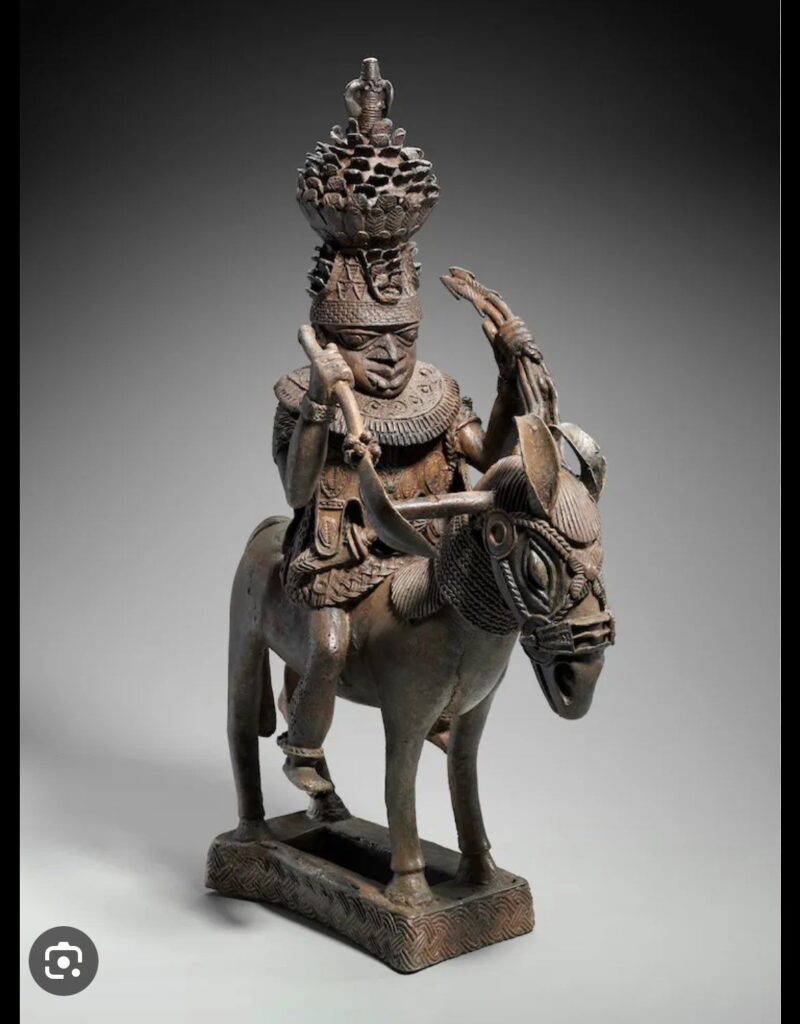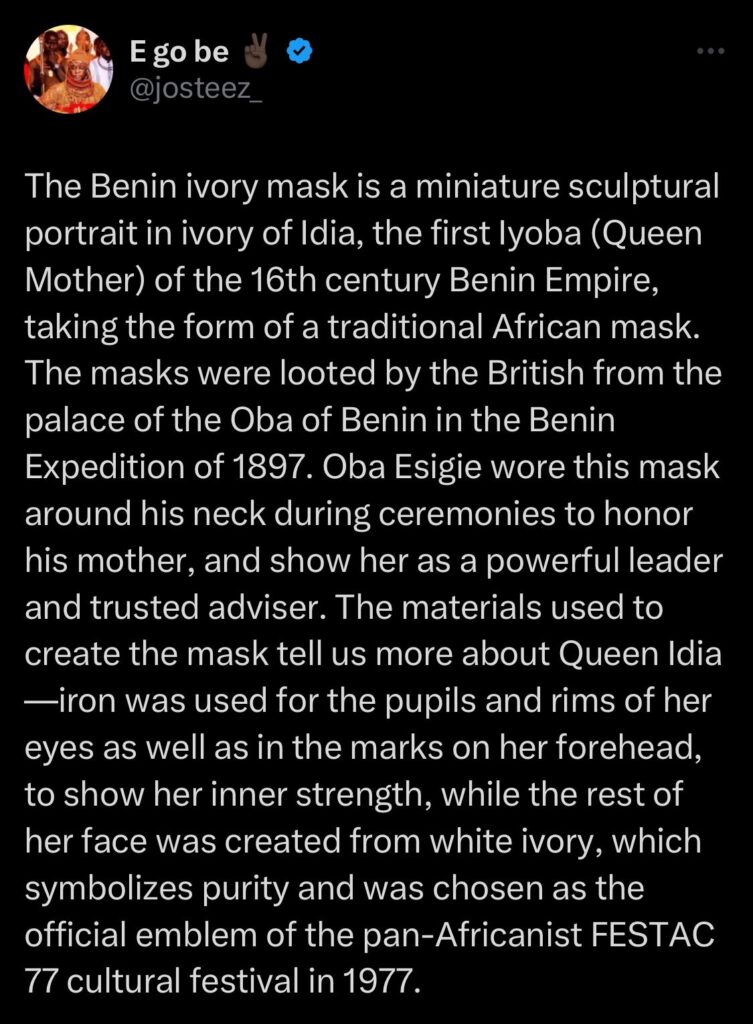In the pulsating beats and artistic expressions of Rema ‘s performances, a vibrant tapestry unfolds, interwoven with the rich cultural history of Benin. Each element, from the enigmatic Horseman to the bronze mask of Queen Idia and the ethereal bats of Benin City, carries layers of meaning and significance. Beyond the rhythms, these symbols embody a profound connection to heritage, history, and the ongoing dialogue about cultural representation. Join us as we unravel the narratives behind these cultural icons, exploring debates, historical events, and personal connections that make Rema a genius in reflection of his roots.

The Mystical Horseman in Benin Art:
Rema depicted The enigmatic Horseman
According to scholars like Tunis, his attire closely resembles that of an Oyo warrior. In contrast, Karpinski suggests a representation of Oromiyan, the founder of the present dynasty. Nevadomsky leans towards the figure as a commemoration of Oba Esigie’s defense against Idah invaders in the early 1500s. The continued discourse underscores the mystery and importance of this figure in Benin art and culture. Many artifacts, including depictions of the Horseman, remain housed in the British Museum, contributing to the ongoing dialogue about cultural representation and heritage.

Rema with the piece of Queen Idia.
The reign of Oba Esigie (ca. 1504–1550) marked a crucial moment in Benin’s history, particularly during an invasion by the neighboring Kingdom of Idah from the northern borders. Queen Idia, the mother of the young Oba Esigie, played a pivotal role in defending the kingdom. Leading an army consisting of both women and men, she successfully repelled the invaders and conquered Idah. In recognition of her bravery, Oba Esigie crowned her the First Queen Mother (Iyoba), and a palace was dedicated to her honor. Unfortunately, the original bronze mask representing her courage was taken from the Oba’s Palace during the British invasion in 1897 and now resides in the British Museum.


Rema Riding on a Bat
During a recent visit, the breathtaking sight of thousands of bats filling the skies was a testament to the unique natural wonders of Benin, which Rema always spoke about. To preserve this remarkable habitat, the government, in collaboration with the royal palace, actively plants more trees in King’s Square, the 3rd largest square globally in terms of exit roads. Rema, deeply connected to the cultural richness of Benin, incorporated these features into the opening of his concert at the London O2. This artistic curation aimed to evoke a sense of home and cultural connection for the audience.
https://youtu.be/6lT9ZkEW12w?feature=shared ( click to watch youtube video).
In the heart of London, where the stolen artifacts find their current residence, Rema’s artistic choices echo louder. The stolen artifacts, particularly the mask of Queen Idia and the Horseman, carry a weight of history and cultural significance that transcends borders. The fire on the screens and other effects symbolize the horrors that surrounded the theft of those works of art. People were killed, and the whole city was burned down, including the famous church of the Oba, built by Portuguese missionaries.
As we revel in the melodies and visual splendor of Rema’s performance, let us carry with us a deeper understanding of the symbolism that intertwines with ongoing dialogues about repatriation, cultural heritage, and the narratives behind stolen artifacts.




One Response
Wow, this post is fastidious, my younger sister is analyzing such things, therefore I am going to
let know her.